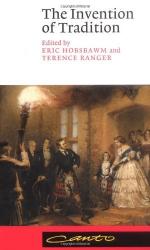
|
| Name: _________________________ | Period: ___________________ |
This test consists of 5 multiple choice questions, 5 short answer questions, and 10 short essay questions.
Multiple Choice Questions
1. The second phase of development started when Victoria was crowned Empress of _______.
(a) Guinea.
(b) Australia.
(c) Portugal.
(d) India.
2. According to the book, _______ had the biggest media impact on the broadcast of figures of the monarchy including George V.
(a) The ABC.
(b) The BBC.
(c) The AAC.
(d) The PBS.
3. The sites of the great events of the Indian uprising were a destination for the English and included all of the following except ______.
(a) The Memorial Well.
(b) The Gardens in Kanpur.
(c) The Mason Lodges of Calcutta.
(d) The Delhi Ridge.
4. David Cannadine suggests that ____ aspects of ritual, performance and context deserve study.
(a) Fifteen.
(b) Eight.
(c) Ten.
(d) Twelve.
5. During the third period, the royal rituals helped to comfort people during times of _______.
(a) Plenty.
(b) Change.
(c) Winter.
(d) Starvation.
Short Answer Questions
1. _______ was spread by the colonial powers in Africa, forming a new cultural system.
2. As a reward for their loyalty to the British, several Indians were given all of the following titles except ______.
3. The book states that blacks were taught ______ through monarchical traditions.
4. Men often used tradition against women in order to establish new ______ norms.
5. Cannadine suggests that the British monarchy went through ______ distinct phases as the ceremonial image of the monarchy developed.
Short Essay Questions
1. What did the British East India Company initially want to do in India?
2. By looking at the ten aspects of rituals, what does David Cannadine believe can be uncovered?
3. How was the ceremony that incorporated India into Britain used?
4. How was the cultural system spread in Africa, according to the book?
5. How might one describe the second stage of the British monarchy, which began when Victoria was made Empress of India?
6. Who were blacks taught to mirror in order to spread the different ideas of gentility, according to the book?
7. What are the ten aspects of ritual that David Cannadine says should be studied?
8. What did Africa not have to offer as a society, which meant that they had to use a monarchy?
9. Into what two groups was India divided in the middle of the nineteenth century?
10. Into what had the British turned themselves when they gave their monarch sovereignty over to India?
|
This section contains 629 words (approx. 3 pages at 300 words per page) |

|




